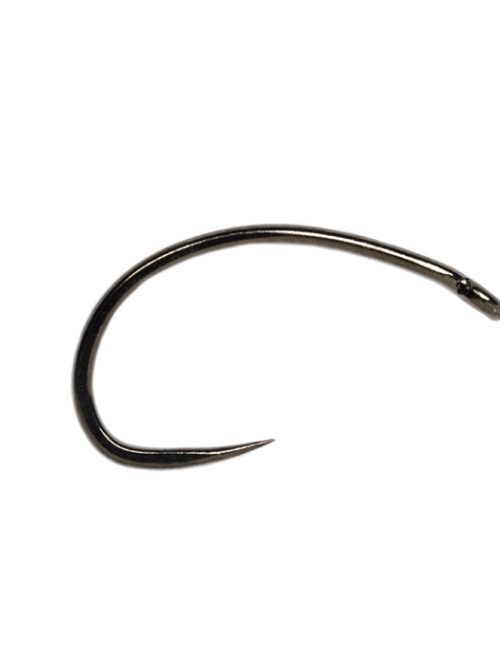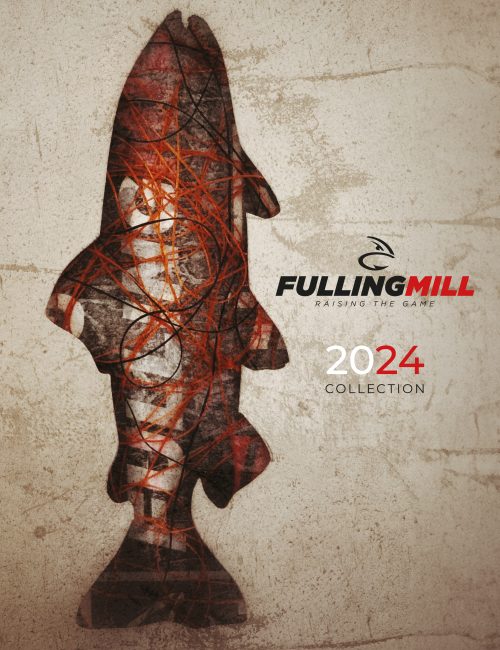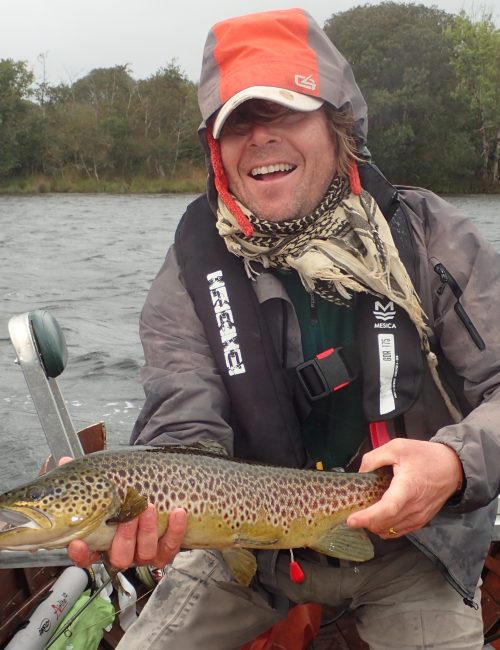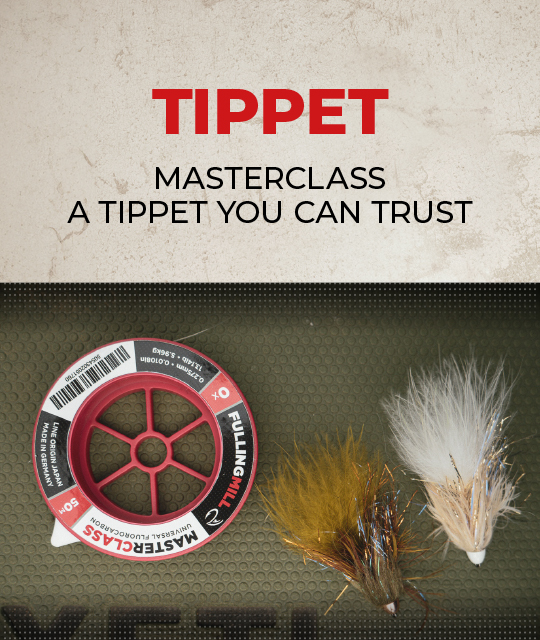A Simple Guide to Having the Correct Tackle and Flies for Any Venue and Conditions
Whether you are new to river fishing or an experienced angler, preparing for a day on the river can make all the difference to the success and ultimately the enjoyment of your day. If, like most anglers, your time on the water is precious, you will want to make the most every minute. The best way to do that is to have the correct ‘tools for the job’.
Preparing for the Day
When preparing your equipment for the day it is crucial to remember key items such as appropriate clothing, waders, boots, polarized glasses, hat etc. Most of these items are standard and the majority of anglers, including myself, take these items as second nature every time we go to the river. But you should always double check to make sure you have them!
Outside of those essentials, when preparing for a day on the river I look at just two factors: the size of river and time of year. Based on these factors I select my tackle and (if possible) prepare flies accordingly. Over the years I have found that taking these two things into account will generally keep you on the right track.

Rod Selection
For me personally, the size of the river—and to a lesser extent how overgrown it is— are the two key factors when choosing the tackle that you are going to use. This allows me to determine the size and weight of the rod that I’m going to need. This concept may sound obvious, but it’s amazing how often I see anglers in person or on social media using what I consider to be the incorrect rod and leader for the conditions.
There is a current trend to use 10 – 11ft rods for line weights #3 and less. Whilst these rods are superb for modern nymphing techniques, there is no doubt in my mind that they are a disadvantage on small and/or overgrown rivers. On small rivers, I will almost always opt for an 8 – 9ft rod as this is the most appropriate length for the size of the river. Going against the modern hype in these situations will prevent the constant frustration of using a rod which is too long and light for the situation where close-range accuracy is by far the most important consideration.
Of course, the opposite is also true, if you are going to be fishing a medium to large river then a shorter rod can also be a real disadvantage, particularly when fishing any of the modern nymphing techniques. When fishing a larger river I would suggest that 10ft would be the minimum length unless you plan to spend the day fishing streamers or dry flies.

There’s No “One Rod” for the Job
Over the years I have come to the conclusion that if you fish a variety of rivers there is no “one rod” for the job. You can however get your selection down to two rods and expect to cover almost every river you may encounter. My choices would be an 8’6’’ – 9 ft for smaller rivers/ dry flies and 10- 10’6’’ft for larger rivers and nymphing/spiders.
I like to fish with rods in the #3-#4 line weight as they allow you to fish a range of techniques on all rivers throughout the season. If you are fishing a large open river and are prepared to carry both rods, you also have the option to set up a longer nymphing rod and shorter, more accurate dry fly rod.
If you are on a budget and intend to fish a variety of rivers I would recommend that you invest your money in two cheaper rods rather than investing in a single, more expensive rod. Whilst in the past there was a significant advantage in the top-end rods, there are now some tremendous value rods on the market, which I believe you will catch just as many fish with. In fact, some of my best catches in recent years have been with rods that cost less than £150.

Leaders
The same principles above apply to leaders. If you are fishing on smaller rivers and/ or dry flies, shorter tapered leader will allow you to fish a variety of methods where casting and accuracy are the most important considerations. If you are fishing nymphs, particularly during the winter, or another period when there will be little surface activity like high colored water, a long tapered or a level leader with built-in indicator will allow you to fish modern euro nymphing methods with reduced drag and therefore catch more fish.
Again there is no one size fits all with leaders. As a result, I would invest in 2 reels. One with a standard fly line and tapered leader, and other with a long mono nymph leader with indicator. Having both leaders on separate reels (or spools) allows you to ‘mix and match’ the appropriate choice of rod and leader for the river, conditions, time of year and method.
Fly Selections
Whilst the size of river dictates my choice of tackle, it is the time of year and conditions are the key factors when preparing (or taking) the correct flies for your session.
This does not, however, mean that the size of the river is not a factor. If you are fishing a small river or stream it is also in all probability going to be shallower than a larger river. As a result, when you select your nymphs you should look at the size of tungsten beads on the patterns you have ready for your session. On smaller rivers, you are far more likely to use smaller bead sizes (up to 3mm) and on large rivers, you will be generally fishing in larger, deeper currents and whilst the patterns may be the same, you will have a much greater requirement for patterns with larger beads (up to 4mm and above).
So, while the weight of flies can generally be determined by the size of the river, patterns themselves are almost always selected based on time of year. This is especially important for your dry fly selection.

Dry Flies
Before the season starts it is worth considering how the year will unfold and what key hatches you will encounter. These may vary depending on your location but it is usually safe to assume that olives, sedges, midges and small terrestrials will appear at some point during the year. Add to this some naturals that require specific imitations such as mayflies, hawthorns, sulphur duns, spinners and some large terrestrials and you have the basis of a very diverse dry fly selection that will see you through the year on most waters. Build a selection and take it everywhere with you!

Nymphs
When nymphing I like to build a selection around a few basic patterns that fall under three categories –
1. Go-to nymphs. These are your standards- go-to patterns you have confidence in such as perdigons, pheasant tails, olive nymphs and hares ears.
2. Colored water nymphs. Patterns such as squirmy worms and larger nymphs with bright tungsten beads
3. Cold-water and winter patterns. This will include grayling patterns such as pink nymphs, shrimps and egg flies.
In order to help prepare for a river session, I find it best to organise my ‘go-to’ patterns by weights of beads. If you are fishing a wide range of rivers and carry lots of flies, consider separating flies into separate boxes. On a big deep river, there is little point in carrying large numbers of light nymphs. The same applies to small rivers there is little point in carrying a box of heavy tungsten, particularly if you are planning on covering lots of water. As the weight of nymphs is critical to effective nymph fishing, having light and heavy boxes allows you to easily spot what you may need to stock up on prior to the trip. It is amazing how easy it is to miss a certain weight or bed size if your flies are organised by pattern rather than weight. These nymphs should form the core of your selections and like your dry fly box, you can take them with you almost anywhere throughout the season.

Special Conditions
Specific river conditions and times of year dictate that you may need to move away from your ‘go-to’ patterns and adapt to the conditions at hand. As a result, I will also add a smaller box (or boxes) of dirty water patterns (including streamers) and winter flies. Again, having flies organised in this way ensures that you can check conditions and quickly check what you may need to stock up on. You can also leave these boxes at home when not required and save weight and storage space in your chest pack or waistcoat.

Hopefully this have given you some ideas and thoughts on how you can follow some simple rules and guidance to ensure you have the tackle and flies ready for all conditions on most rivers. It is a simple system to follow but it has served me well for many years, meaning I am very rarely missing the correct tackle or flies for a given day.
To learn more from Simon Robinson about fishing rivers, check out his post about essential river flies here!






